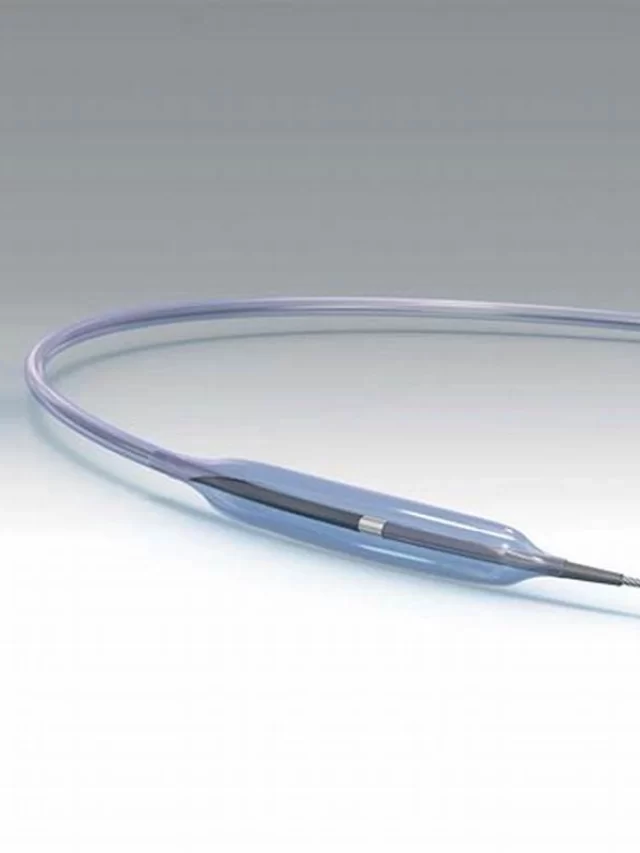Percutaneous Transluminal Coronary Angioplasty (PTCA) and Percutaneous Coronary Intervention (PCI) essentially refer to the procedure of widening a narrowed coronary artery by employing an inflatable balloon and introducing a metallic stent into the arterial circulation through access points like the femoral, radial, or brachial artery.
In modern medical practice, this intervention stands as the most widely utilized method for managing ischemic heart diseases. However, there is no substantive difference between PTCA and PCI. We will also explore the potential complications associated with this intervention in detail.
PTCA (Percutaneous Transluminal Coronary Angioplasty)
Definition
PTCA, commonly referred to as angioplasty, is a minimally invasive procedure used to open narrowed or blocked coronary arteries. When considering the difference between PCI and PTCA, PTCA is typically performed in the cardiac catheterization lab by a cardiologist.
Procedure
- Catheter Insertion: A catheter with a deflated balloon at its tip is inserted through an artery, often in the groin or wrist, and threaded up to the blocked coronary artery.
- Balloon Inflation: Once the catheter reaches the site of the blockage, the balloon is inflated. The inflation compresses the plague against the arterial walls, widening the artery’s lumen, and improving blood flow.
- Balloon Deflation and Stent Placement (optional): After widening the artery, the balloon is deflated and removed. In some cases, a stent is placed at the site to help keep the artery open. This is known as percutaneous transluminal coronary angioplasty with stent placement (PTCA with stenting).
Purpose
PTCA is primarily used to relieve the symptoms of CAD, such as chest pain (angina), by improving blood flow to the heart muscle. It is also performed in some cases during a heart attack (acute myocardial infarction) to open a blocked artery and restore blood flow, which can save heart muscle tissue.
Outcomes
While considering the difference between PTCA and PCI, PTCA can provide immediate relief from symptoms and improve blood flow. However, restenosis (re-narrowing of the artery) is a concern, and this can happen over time. The use of drug-eluting stents (DES) has significantly reduced the risk of restenosis.

PCI (Percutaneous Coronary Intervention)
Definition
PCI is a broader term that encompasses various percutaneous procedures used to treat coronary artery disease. While checking the difference between PTCA and PCI, PTCA is one of the techniques within the PCI umbrella, but PCI can also include additional procedures such as atherectomy and stent placement.
Procedure
PCI, as a general term, can involve several techniques:
- Balloon Angioplasty (PTCA): Similar to PTCA, this involves inflating a balloon to widen the narrowed artery.
- Stent Placement: This can include bare-metal stents (BMS) or drug-eluting stents (DES), which are implanted to keep the artery open after angioplasty.
- Atherectomy: This is a procedure in which plaque is removed from the artery using specialized devices.
- Thrombectomy: In cases of acute heart attack, a thrombectomy may be performed to remove a blood clot from the coronary artery.
Purpose
When you consider the difference between PCI and PTCA, PCI is a broader term encompassing various techniques, and the specific purpose can vary depending on the procedure performed. Generally, PCI aims to treat coronary artery disease by improving blood flow, reducing symptoms, and, in some cases, preventing heart attacks.
Outcomes
The outcomes of PCI can vary based on the specific procedure and patient’s condition. The use of drug-eluting stents has reduced restenosis rates in many cases, but long-term success depends on factors such as patient compliance with medication and lifestyle changes.
Key Difference between PTCA and PCI
Scope
- PTCA is a specific procedure within the PCI umbrella.
- PCI includes a broader range of percutaneous techniques, including PTCA, stent placement, atherectomy, and more.
Purpose and Techniques
- PTCA primarily involves balloon angioplasty to open narrowed arteries.
- PCI encompasses various techniques, and the choice of procedure depends on the patient’s condition and the complexity of the coronary artery disease.
Term Usage
- PTCA is often used interchangeably with angioplasty.
- PCI is a more general term encompassing a range of percutaneous procedures for coronary artery disease treatment.
Outcomes
If you check the difference between PTCA and PCI, you will get to know that both PTCA and PCI can improve blood flow and relieve symptoms, but the specific outcomes may vary based on the procedure performed and the patient’s condition.
Conclusion
To summarize, while PTCA (angioplasty) is a specific procedure aimed at widening narrowed coronary arteries, PCI is a broader term that includes various techniques to treat coronary artery disease. The choice between these procedures depends on the individual patient’s condition and the goals of treatment. While considering the difference between PTCA and PCI, both have revolutionized the management of coronary artery disease, leading to better outcomes and improved quality of life for patients.
Also, Read Why is The Doctor Performing PTCA and What is PTCA?


